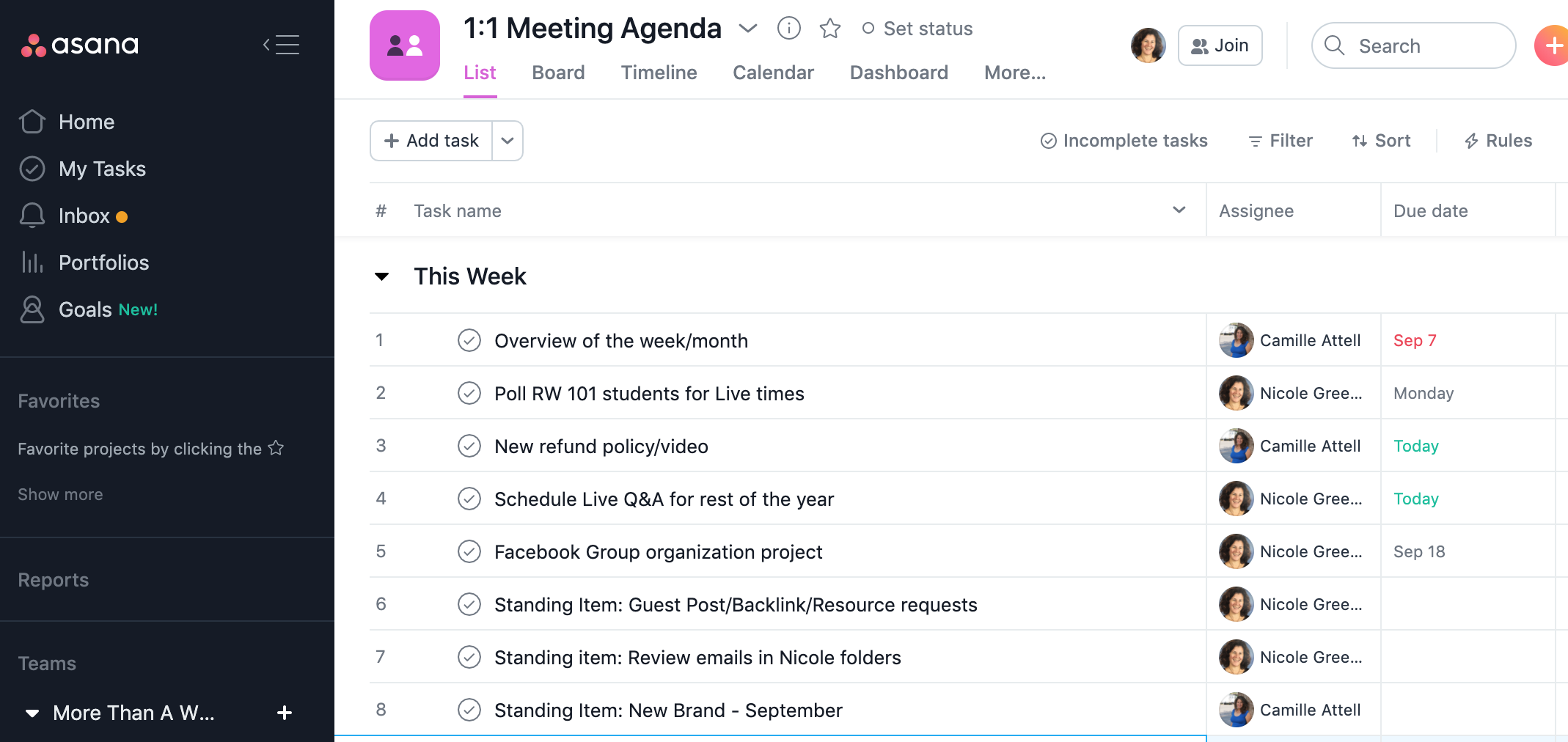6 Ways to Empower Remote Employees was originally published on www.xscapers.com
I teach and coach people to reinvent themselves with remote work or business.
I study trends and have been watching companies reluctantly wade into remote work waters. Fear of losing control, giving employees too much leeway, or managing from a distance seemed too big a risk.
The companies who were willing to dip a toe in did so because offering remote work is actually good for business. I predicted (and the data supported) steady growth in remote work opportunities with more companies offering part-time and full-time remote options over the next 5-10 years.
I Never Could Have Predicted a Pandemic
I’ve been confident in the growth of remote work, but I never could have predicted a worldwide pandemic that would reshape the remote landscape almost overnight.
This has impacted businesses big and small, and forced some to enable their workforce to work at least partially or fully remote, and in some cases indefinitely.
I wrote this article to provide companies and employers ideas for how to support a rapidly growing remote workforce both immediately and long-term, because the reality is that remote work is here to stay. If you are an employee looking for ways to showcase your remote skills to employers, click here to read The Top Skills To Be A Remote Worker.
Who Am I To Write About Remote Work?
In 2016 my husband Bryce and I walked away from long corporate careers. He was a senior financial analyst and I was a corporate trainer responsible for employee training and development programs. I also managed projects, people and remote teams. I have always been an employee advocate using my influence to positively affect workplace fairness and career advancement.
As career professionals it was unthinkable that we would ever willingly leave our safe little cubicles to do something so extreme like quit our jobs, sell our possessions, and RV around the country full-time. But that is exactly what we did.
We reinvented ourselves professionally by freelancing, starting a blog, and launching Remote Work School, where I teach and coach people about remote work and business.
Because I’ve been both a remote employee and business owner who employs remote contractors, I have the perspective of how each side is impacted and what both parties can do to create a win-win remote experience for everyone.
How To Work With Remote Employees - Empowerment First
Empowering employees should be the core of everything.
While doing research for this article, I found it odd that many articles talked about how managers should ensure that “remote employees are accountable.” I guess I shouldn’t be surprised. It’s standard stuff to task middle managers with every responsibility, including how their employees might behave when they aren’t in the office, as though managers are crystal-ball carrying wizards.
When managers are tasked with making employees more accountable the opposite can happen—employees aren’t empowered which can lead to the manager owning all of the decision causing overwhelm and burnt-out.
Studies show that empowering employees to discover and communicate their own work style not only takes the burden off of managers, it makes employees feel more valued and can result in more productivity, loyalty and longevity.
6 Ways To Empower Remote Employees
This list will help you manage remote employees in practical ways, but more importantly it will shift power back into the hands of employees, creating a more balanced and productive remote workplace. If empowering employees scares you, then you my friend definitely need to keep reading.
1. Show Empathy
Let’s get real—this whole remote thing isn’t easy. It’s not easy for companies or employees either. Some employees can adapt easily and find that being location independent is no big deal. But some don’t make that transition so easily.
Working away from an office or location, without the familiar co-worker and manager dynamic can be hard. Feeling isolated is real. Distractions like TV, a load of laundry or home-schooled kids can make focusing harder. Maybe that’s true for you too, so you can relate to what your team members are going through.
The best thing you can do as an employer is be supportive of this transition. You were put in this role most likely because someone thought you’d be a good leader (or you promoted yourself to a business owner). Part of leadership is showing empathy for your team members, by asking them how they’re doing, and giving them grace on this adjustment period. We’re people not robots and “embracing change” isn’t exactly in our program code no matter how many company mission statements like to promote that ideal. Show empathy and your employees will feel more cared for which creates a more harmonious relationship and productive employee.
Sidenote: If you’re looking to hire remote workers be sure to look into the RV community. RVers are already adapted to working remotely, managing their time, and navigating things like internet and staying connected. They are incredibly resilient people who make great remote employees.
2. Watch Results, Not The Clock
When I was a new manager in the mid-90s, I used to watch who packed up their desks at 4:59 PM. The people who stayed longer were labeled “high achievers” and given more opportunities. Here’s a secret though—I’d pretty much run out the door one-minute after the last person who left.
I cringe thinking about it because it was backwards thinking. Yes, there are some jobs where employees are paid by the minute and “being on the clock” is the policy. But this outdated way of managing people was dead a long time ago, and frankly should be buried as we transition to remote work.
What’s most important is what people do with their time. Are they producing results? Did they hit agreed upon deadlines? Did they innovate on an idea? Is your employee recommending improvements? Look for employees to demonstrate initiative rather than if their online profile is “available” at 5:00 PM. And if possible, try to avoid wanting employees to be at your beck and call whenever you feel like “pinging” them. There’s a better way.
3. Stop Pinging and Start Planning
I’m one of these people who has a million ideas always floating in my head. And I have this terrible habit of popping in on my husband and sharing them. Or if he’s not around I have the urge to ping my virtual assistant Nicole on Slack (a really great communication tool that gets totally abused).
This is incredibly disruptive. It’s not like Bryce and Nicole sit around all day waiting for my spur of the moment ideas to flood in. My agenda shouldn’t be any more important than anyone else’s. Sure, sometimes we’re all in crunch mode and scramble to get stuff done, but we should all work towards a more sustainable and sane workflow.
A better approach is to do advanced planning. I’m a big fan of working in 90-day goal windows and then breaking them down into monthly and weekly priorities. It’s not like I can plan every little detail and prevent every surprise, but it adds discipline and sanity to how we work. It also helps us stay focused on the most important things, so we don’t get lost in the “daily weeds” of thoughts, ideas and tasks. We use three tools for planning:
- A white board and sticky notes
- A 90-day planner
- Asana shared project management tool

4. Co-Create a Communication Framework
Nicole and I have co-created a communication flow. We meet every Monday at 2:00 PM ET (this is a good time for her) to talk through the weekly priorities. We use a shared agenda on Asana (a great project management tool) and we each add our topics in advance of the meeting. My job is to keep Nicole focused on the top priorities and her job is to communicate things I need to know and what support she needs.
Throughout the week we use Slack for quick updates. We use Voxer (a great voice communication tool) if we need to explain something in more detail. And we have an agreement to respond by the end of the day, unless something is urgent in which case we make sure to say “this is urgent.”
I honestly don’t care what hours Nicole works, as long as she hits the weekly targets. Of all the clients that Nicole supports (because she’s a contractor) she says I’m her favorite because of how empowered she feels (maybe she says this to all her clients). I know it’s true because she recently fired a client for bad management. Now that’s empowerment.
Nicole and I have established great working standards and boundaries which I’m proud of, especially because we’re on opposite coasts. Bryce, on the other hand, is just steps away and has yet to figure out how to fend off my daily idea-bombs. Although, I noticed a few days ago he started wearing a headset.
5. Encourage Interaction, But Don't Force It
A lot of articles say you should create interactions for employees. Virtual water coolers, fun games, set up a Slack channel just for memes. Ok I get it; you should have some fun especially since you lose in-person connection when you go remote. But people don’t love forced virtual connections any more than when they worked in a location.
I used to work for a retail home design company in the midst of a big brand change and reorganization of the stores which affected the retail employees. Leadership wanted us corporate trainers to create fun games and competitions to take the employees’ minds off of things. While their jobs were intact, the roles were changing and since humans and change don’t mix well, the games were meant to “improve morale.”
Everybody hated it. They felt forced into cheesy games that they didn’t want to play. They just wanted direct answers and to know the future of their jobs. That doesn’t mean they didn’t want to have fun, but fun doesn’t replace reality.
I encourage managers and business owners to find ways to interact with their team members in organic ways. Perhaps it’s a team game or competition, but maybe it isn’t. Some people would prefer to meet with you one on one for a deep conversation. Some people are totally fine being left alone to get their work done. The point is don’t think you MUST create forced interactions just because you have a remote workforce. Instead focus on what your employees want and how they feel best supported. Then make that your interaction policy.

6. Trust and Let Go (Even Just A Little Bit)
This last one is more of a mindset than a specific action step. Try approaching this whole remote work reality with trusting people first and questioning them second (if that’s even needed).
Managers and leaders are sometimes unconscious about the dynamic they create. It’s no one’s fault really and more of a cultural thing. Old management systems die hard and one of the oldest is that employees are not to be trusted. That somehow, they will cut corners, do less work, and now that they are remote, surf the internet all day. Maybe that’s true for some but most people want to do a good job. Most people take pride in their work and want to make their managers proud. If you follow numbers 1-5 in this article, then your employees will appreciate and respect you even more. That will go a long way to create loyalty, dependability, and better results too.
If you’re someone who likes a tight grip on your staff (like I did in my first mid-90s management job) then I want to help you get comfortable with letting go a little and trusting that your employees want to do a good job—so let them.
Empowering Remote Employees Creates a More Productive Workforce
These are six ways that you can empower your remote employees and create a more productive workforce. Keep in mind that while these are recommendations that help remote teams, the big takeaway should be to meet with your employees individually and find out what works best for them, you, and supports the company’s mission.
I will leave you with this: One of the best managers I ever had was one who I never saw. We worked in two different states and time zones. We met weekly on the phone, talked about goals, and then he set me free to do my job. When I turned in my work, he always praised me, and if it wasn’t to his standard, he would coach me on what he’d like to see differently the next time.
He never made me feel like I was anything less than a rock-star employee, even when I screwed up. And he often talked about what it was about my work that made him trust me, so I always knew what to keep repeating. It was the lowest-effort management relationship on his part that produced the highest-quality work of my corporate career.
This is what empowerment looks like.

Author
Camille Attell
Camille is the founding partner of MoreThanAWheelin.com, a website specializing in travel, RV life, remote work, and the emotional journey. A lifelong learner and longtime instructor, she is passionate about helping others live a life of freedom and flexibility. She is the creator of Remote Work School, an online school helping people find remote work opportunities. In 2016, she and her husband, Bryce, left their corporate jobs to travel and work full-time. When not working and helping others, Camille enjoys hiking, snowboarding, culture and the arts, and photography.



